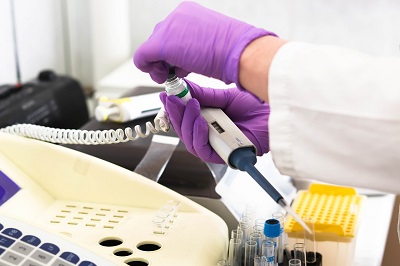To apply for Class II medical device registration with the Indonesian Ministry of Health (MOH) through the National Agency of Drug and Food Control (BPOM), certain requirements must be met. The process involves preparing and submitting a series of documents and following specific regulatory guidelines. Below are the key requirements for registering a Class II medical device in Indonesia:
1. Local Authorized Representative (AR) or Importer
- Foreign manufacturers must appoint a local authorized representative (AR) or an authorized importer in Indonesia to handle the registration process.
- The AR or importer must be a legally registered company in Indonesia and will act as the point of contact between BPOM and the manufacturer.
- The AR/importer will be responsible for ensuring compliance with Indonesian regulatory requirements and for communicating with BPOM.
2. Product Classification
- Ensure the device is classified as Class II. Class II medical devices are moderate-risk devices, such as diagnostic tools, certain surgical instruments, and low-risk implantable devices.
- BPOM provides guidance on the classification of medical devices. You can consult their classification guidelines or ask a local regulatory expert to help confirm the classification.
3. Required Documentation
The following documents are required for the registration application:
- Cover Letter: A formal letter from the manufacturer or AR, stating the intent to register the device with BPOM.
- Product Description: Detailed description of the device, its intended use, specifications, features, and model variations (if applicable).
- Certificate of Free Sale (CFS): A CFS from the country of origin, certifying that the device is legally marketed and sold in that country.
- Manufacturing License: If applicable, a license from the country where the device is manufactured, showing that the manufacturing site complies with local regulatory standards.
- ISO 13485 Certification: ISO 13485 or equivalent certification for the manufacturer's Quality Management System (QMS), demonstrating that the manufacturer follows internationally recognized quality standards for medical devices.
- Clinical Evaluation Report (CER): If required, a Clinical Evaluation Report providing evidence of the clinical safety and efficacy of the device. This is particularly important for high-risk or novel devices.
- Risk Management Report: Documentation showing compliance with ISO 14971, outlining how risks related to the device are identified and mitigated.
- Labeling: The device's labeling and Instructions for Use (IFU) must be provided in Bahasa Indonesia to comply with local language requirements.
- Regulatory Application Form: BPOM’s official registration form, which requires detailed information about the product, manufacturer, and the device’s intended use.
4. Device Labeling Requirements
- The labeling of the device must meet local standards and include information in Bahasa Indonesia (Indonesian language). The key requirements for labeling include:
- The product name, model, or type.
- Intended use and indications.
- Manufacturer and distributor details.
- Instructions for use, warnings, and precautions.
- Batch/lot number and expiration date (if applicable).
- Storage conditions and handling instructions.
- Contraindications and potential risks.
5. Regulatory Fees
- Registration fees for Class II devices will apply. The exact amount depends on the product and registration type. It's advisable to consult BPOM or your authorized representative for up-to-date fee details.
6. Compliance with Technical Standards
- The device must comply with applicable technical standards, such as:
- ISO 13485 for quality management systems.
- ISO 14971 for risk management.
- IEC 60601-1 (for electrical medical devices) or other relevant standards depending on the device type.
- If the device is a software-based device, compliance with relevant standards (e.g., IEC 62304) for software life cycle processes is required.
7. Post-Market Surveillance and Adverse Event Reporting
- After registration, manufacturers and their local representatives must ensure the device's post-market surveillance and report any adverse events or product malfunctions.
- This includes monitoring the device’s performance in the market, reporting incidents to BPOM, and complying with any recall or safety notice requirements.
8. Factory Inspection (If Required)
- BPOM may request a factory inspection to ensure compliance with manufacturing standards. This is more common for higher-risk devices or if the device is produced locally.
- The inspection will verify that the manufacturing process follows Good Manufacturing Practice (GMP) and that the product meets safety standards.
9. Product Testing (If Required)
- In some cases, product testing may be required, especially for new or high-risk devices.
- BPOM may request third-party laboratory testing to verify safety and efficacy, particularly if there is a lack of sufficient clinical or performance data.
10. Timeline for Registration
- The typical timeline for registering a Class II medical device in Indonesia is between 3 to 6 months, depending on the completeness of the documentation, BPOM's workload, and whether additional information or factory inspections are required.
11. Validity and Renewal
- Once the device is registered, BPOM issues a Registration Certificate (Surat Tanda Pendaftaran, STP), which is typically valid for 5 years.
- After 5 years, the device must be renewed for continued sale and distribution in Indonesia.
Additional Notes:
- Local Translation Requirements: Ensure that all documents (such as product labels, IFUs, and technical documentation) are translated into Bahasa Indonesia, as this is a strict regulatory requirement.
- Multiple Variants: If your device has multiple variants (e.g., different sizes, models, or configurations), each variant typically needs to be registered separately.
- Changes in Device Information: If there are any significant changes to the device’s design, manufacturing process, or labeling, BPOM must be notified.
Contact Points for Further Assistance:
- BPOM: The Indonesian National Agency of Drug and Food Control is responsible for the regulation of medical devices.
- For specific advice or to ensure compliance, consider working with a local regulatory consultant or importer who is familiar with the BPOM registration process.
By meeting these requirements, you can ensure a smoother and more efficient registration process for your Class II medical device in Indonesia. Would you like more detailed advice on any specific part of this process?

Contact Us:
Whatsapp or Wechat:+86 15816864648;email address:hito.lin@grzan.cn
.png)
.jpg)
.png)

.png)